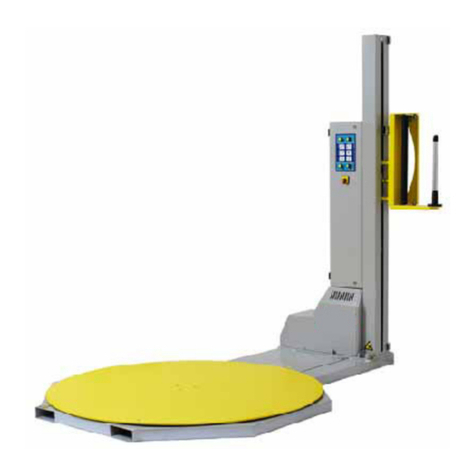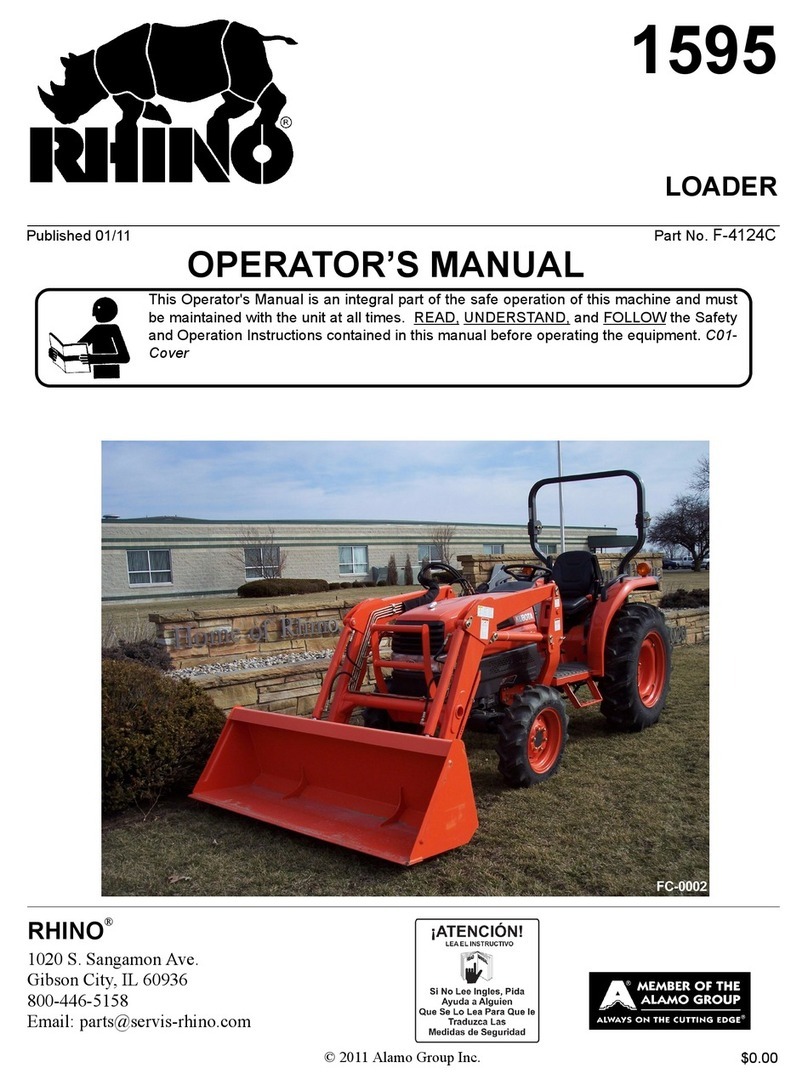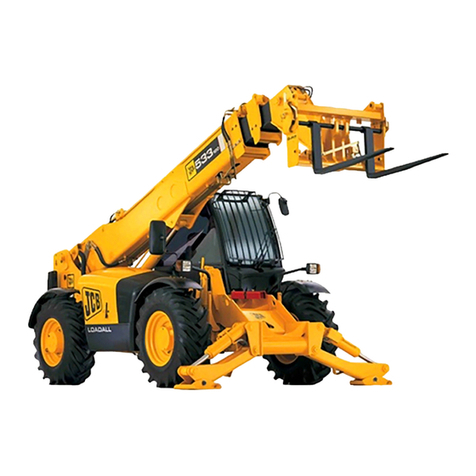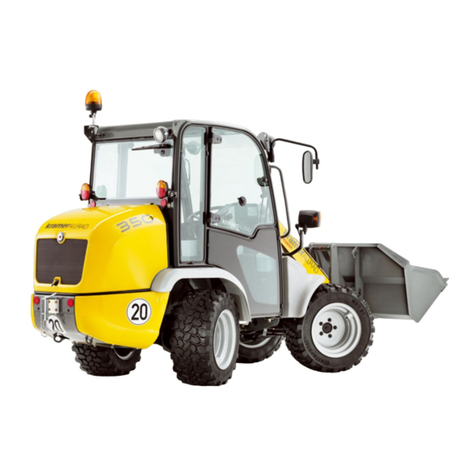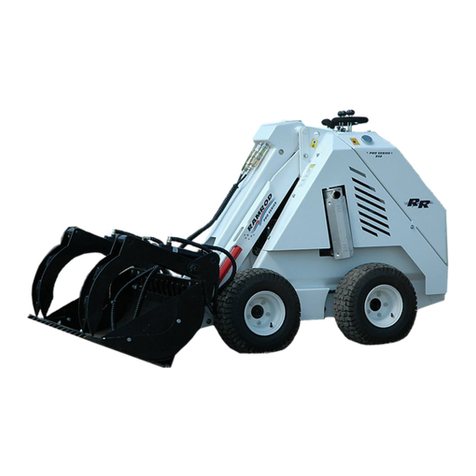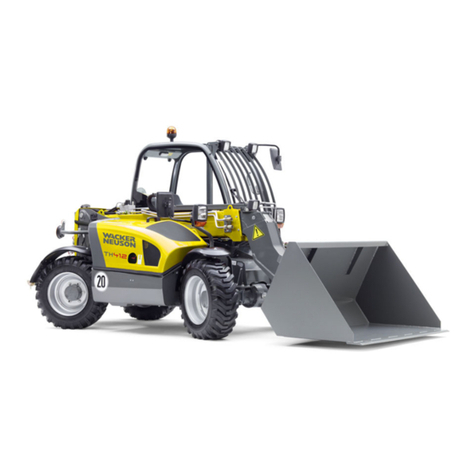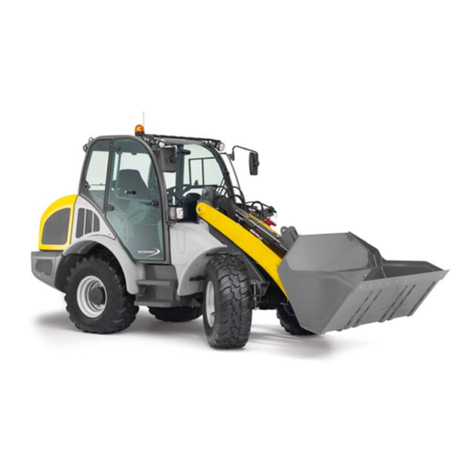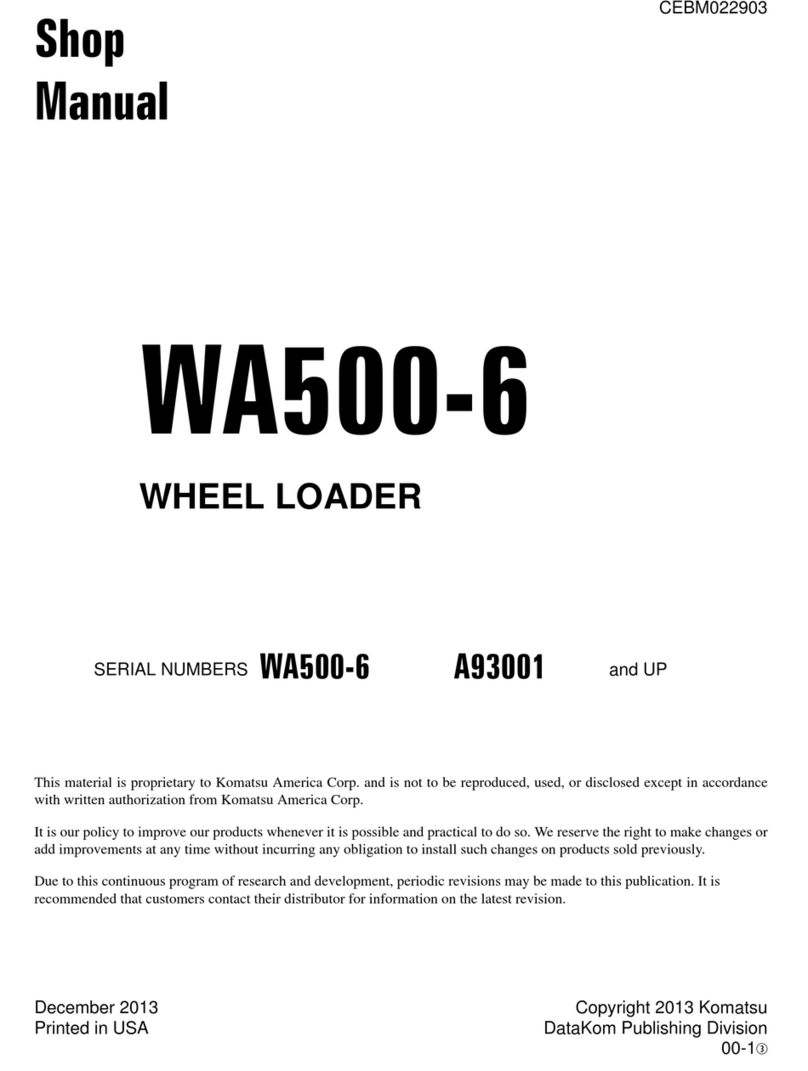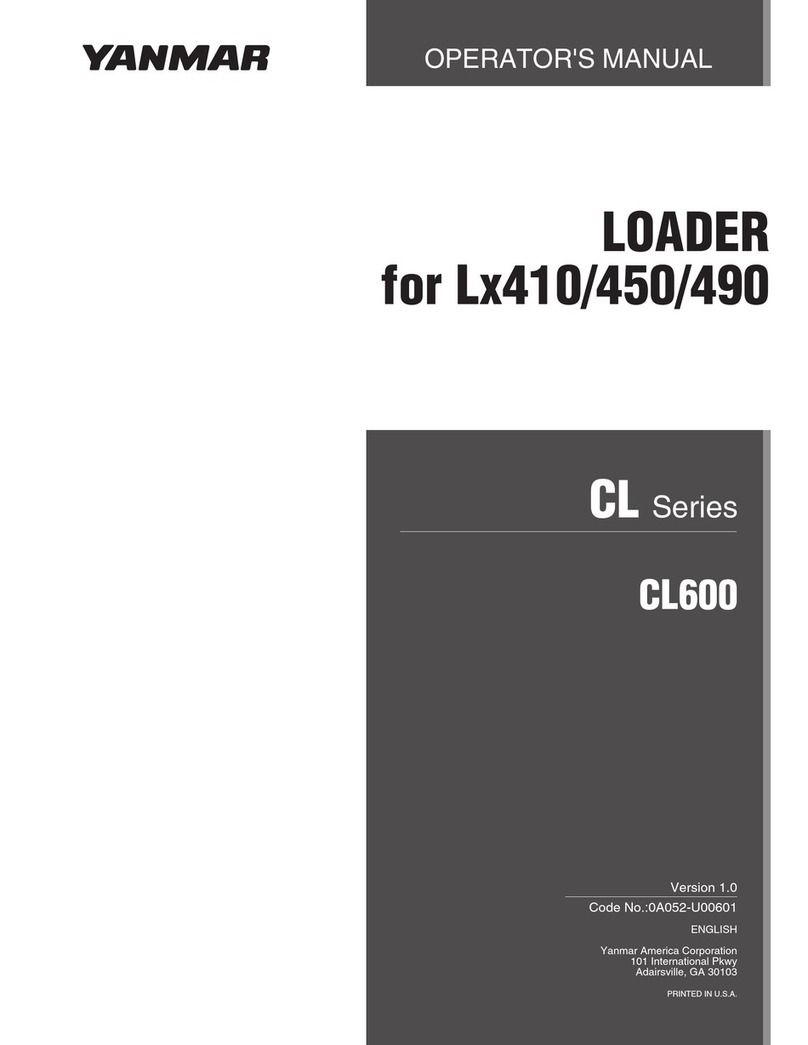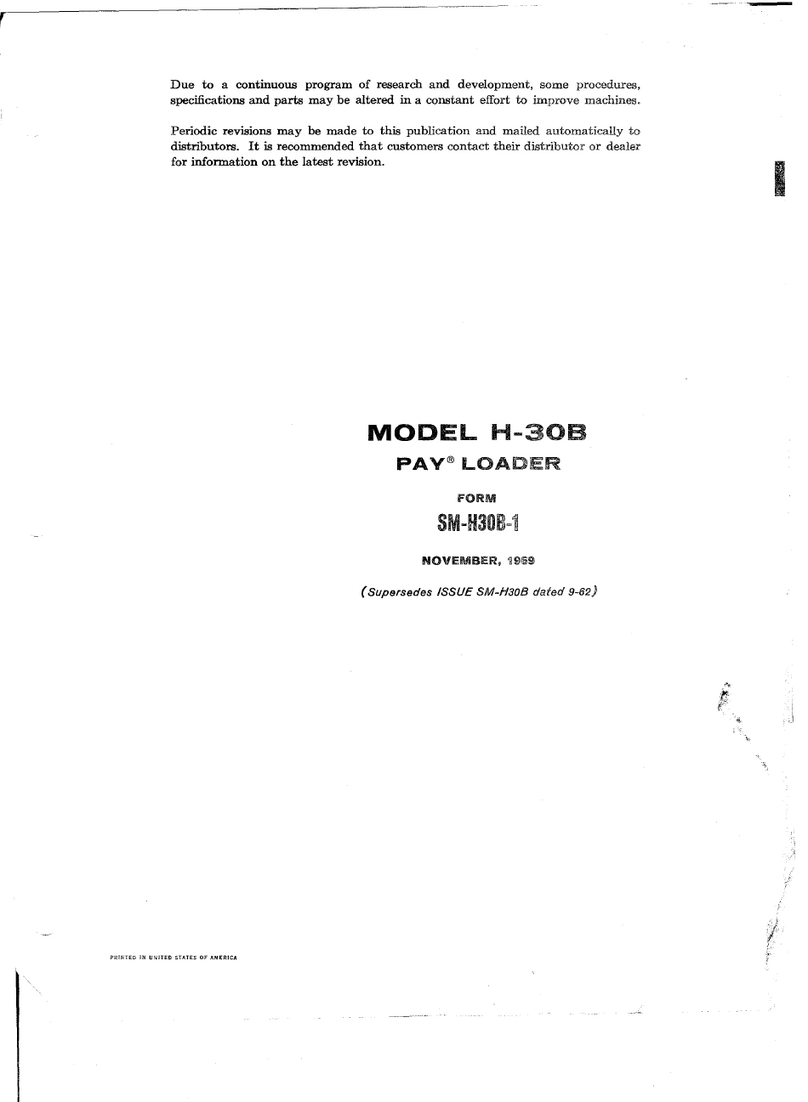Messersi SL 45 User manual


- Denne manual følger med hver maskin.
- Denne manual er lagd og formulert I hht EEC regulative og da spesielt til UNI-ISO 6750 regulativ.
- Denne manual gir informasjon om broken av maskinen , og da spesielt i hht de sikkerhets
prosedyrer en må ta hensyn til under bruk. Videre inneholder den nødvendig informasjon om
maskinens vedlikehold .
- Den informasjon som er med garanterer ikke absolutt sikkerhet, men gir ett fornuftig grunnlag for
dens anvendelse.
- Safety instructions and precautions to be applied in general or in particular are listed in each
chapter in correspondence to the operating specifications.
- Please follow the instructions in this manual and scrupulously follow the recommendations.
Respecting the procedures will allow operating in absolute tranquillity and safety.
- The company, in its constant search to improve its products, or for reasons of constructive,
technical-functional and commercial requirements, reserves the right to modify the machine without
the obligation to timely update the sections of this publication involved.
- Designs and texts may disagree more or less obviously with some technical characteristics of the
machine; in this case, contact the manufacturer before proceeding.
- In the manual, and if necessary on some parts of the machine, certain symbols are used, followed
according to the case by messages inherent to safety. For more attentive and easier reading of
these, follow the warnings as described below:
FARE
Når en ser dette symbolet, er der en potensiell fare for sikkerheten til fører eller andre personer, og til
og med fare for død. Vis ytterst forsiktighet og se på forslag i manualen.
ADVARSEL
Dette symbolet indikerer en potensiell fare som kan elimineres ved bruk av forslagene som er skrevet i
denne manual sammen med sunn fornuft.
Riktig bruk av denne maskin vil være og lese og forstå denne manual,
spesielt det kapittelet som innholder informasjon om sikkerhet.
.
This manual must always accompany the machine and must be kept within easy reach of the operator.
Other than providing instructions on the proper use of the machine, it guards against risks and
dangers deriving from improper use and not in conformity with the use for which it was intended.
CONSERVE THIS MANUAL FOR THE FUTURE REFERENCES

PRESENTASJON AV MASKINEN Side 5
•MASKIN IDENTIFISERING. Side 6
•HOVED DELER PÅ MASKINEN Side 6
•KARAKTERISTIKKER , TEKNISKE DATA OG YTELSE Side 7
•TRANSPORT OG HÅNDTERING Side 8
•PRESCRIPTIONS FOR CIRCULATION ON ROADS Side 11
GENERAL SAFETY REGULATIONS Side 13
•WARNING AND SAFETY DECALCOMANIA AND PLATES Side 14
•GENERAL REGULATIONS Side 14
•SAFETY REGULATIONS FOR STARTING Side 15
•OPERATING SAFETY Side 15
•SAFETY EXITS Side 16
•MOVEMENT ON SLOPES Side 17
•SAFETY REGULATIONS FOR STOPPING AND PARKING Side 18
•MAKING THE LIFTING ARMS SAFE Side 18
•FIRE-EXPLOSION PREVENTION REGULATIONS Side 19
OPERATOR CONTROLS Pag. 21
•DRIVER’S SEAT, Side 22
- SAFETY BELTS Side 22
- SAFETY BAR Side 23
•CONTROL AND AUXILIARY INSTRUMENTS Side 24
•MACHINE STARTING AND STOPPING Side 29
•MOVEMENT AND DRIVING Side 30
•USE OF THE MACHINE Side 34
EQUIPMENT AND ACCESSORIES Pag. 39
•SHOVEL REPLACEMENT OR REPLACEMENT OF OTHER ACCESSORIES
PREPARED FOR QUICK FITTING Side 40
•HYDRAULIC POWER TAKEOFF (P.T.O.) Side 41
•DRIVER’S CAB Side 41
•USE OF LIFTING FORKS Side 43
•EQUIPMENT AND EQUIPMENTS Side 44
ORDINARY MAINTENANCE Pag. 45
•PRELIMINARY INFORMATION Side 46
•LUBRICATION, GREASING: MAINTENANCE SAFETY Side 47
•STOPPING AND RESTARTING AFTER INACTIVITY Side 50
•SPECIAL CONDITIONS OF USE Pag. 51
•WHEEL REDUCERS Pag. 52
•BRAKING DEVICES Pag. 53
•TOWING THE MACHINE Pag. 54
•REFILLING, INSPECTIONS AND CHECKS Pag. 55
•ELECTRICAL SYSTEM Pag. 62
•SUPPLY TABLE Pag. 65
•MAINTENANCE TABLE Pag. 66
•FAULTS: CAUSES AND REMEDIES Pag. 67
•MAINTENANCE Pag. 73

PRESENTATION
OF THE
MACHINE

The loading shovel has been designed and built for loading and unloading earth, gravel, sand, debris
and other loose material and is however suitable to operate in compliance with the features and
performance indicated in this manual. It is a machine with Diesel internal combustion motorisation with
hydrostatic transmission, joy-stick type servo-controls for traversing and manoeuvre of the arms and
the bucket. Movement is obtained using four pneumatic tyres with suitable tread to operate inside
without damaging the floor.
The machine is equipped with an open or closed driver’s cabin with heating plant and an incorportaed
protective structure against tipping ROPS and against falling objects FOPS –1st level.
FOPS 2nd level protection can be supplied on request for heavy duty and/or particular use; bolt in
replacement of the 4 eye-bolts.
MACHINE IDENTIFICATION
The machine is fitted with a special plate carrying the identification data of the machine, riveted to the
left front side of the frame. For any queries always quote the type and serial number stated on the
plate. For further explanations, please consult the modes on the Spare Parts Manual attached to the
machine. Other accessories which can be installed in the machine will be provided with their
nameplate, which can be seen from the external part of the accessory. For further information consult
the documentation related to the specific element.
MAIN PARTS OF THE MACHINE
1 - Loading bucket
2 - Non-slip access steps
3 - Safety bar
4 - Lifting eye-bolts
5 - Cabin ROPS-FOPS
6 - Hydraulic oil tank
7 - Cowling
8 - Diesel tank (RIGHT and LEFT)
9 - Lever arm
10 - Bucket release and various equipment
11 - Handle for ascent and descent
12 - Auxiliary power take off (P.T.O.)

CHARACTERISTICS AND TECHNICAL DATA
ENGINE
Brand and model Kubota V 2203-E
Calibration Power at 2600 rpm HP/Kw 44/32.5
Cylinders Nº 4
Displacement cm32197
Cooling water
HYDRAULIC SYSTEM:
Hydrostatic transmission with n.2 variable capacity pumps that each power, n. 2 fixed-cylinder
hydrostatic motor reducers.
Negative command brakes on the motor reducers of the rear axle wheels.
Main variable-cylinder axial piston pump Lt/min 71 x 2
Auxiliary gear pump Lt/min 52 x 1
Total capacity Lt/min 194
Useful capacity for power takeoff (PTO) Lt/min 52 a 190 bar
Max. operating pressure bar 330
Hydraulic servo-controls with joy sticks for traversing and manoeuvre of arms and bucket.
Floating electrovalve to adjust the bucket to the ground
Safety electrovalve to block arm descent
Heat exchanger for the cooling of the hydraulic oil.
Oleo-pneumatic accumulator for emergency manoeuvres
FRAME:
Chassis in box-type sheet steel and shaped
PERFORMANCE:
Weight when fully eupped (including operator) Kg 2300
Bucket capacity (SAE capacity m³ 0.35) Kg 600
Tear strength at tooth daN 1700
Thrust force daN 2220
Transfer speed Km/h 0÷9
Possible gradient % more than100
Autonomy About hours 8
TYRES:
Type 10x16.5 - 8 PR

OVERALL DIMENSIONS
TRANSPORT AND HANDLING
LOADING WITH RAMPS AND TRANSPORT BY TRUCK
The machine loading and unloading operations must be carried out on a compact and level
surface.
Check that the transport vehicle is in perfect condition. Apply the hand brake and insert safety wedges
at the front and rear of the rear axle tyres.
The vehicle engine must be off and the key removed from the ignition. The body must be level.
Position the machine at the rear of the truck, ensuring that the longitudinal axle coincides with that of
the truck.
Check that the ramps are suitable for the vehicle to be loaded. Only use homologated and/or
certified ramps.
Check that the ramps are perfectly clean and free of grease and that there is no risk whatsoever of
the tyres.
Check that the ramps are long enough to avoid problems during ascent and descent of the machine.
The length of the ramps must be such that their inclination with respect to the height of the truck
loading platform is between 15º and 16º.

Check that the ramps are properly coupled to the transport vehicle and appropriately
spaced.
The width of the ramp must be such as to allow comfortable passage of the tyres.
The ascent and descent operations must always be carried out with the machine running and the
hydraulic oil at operating temperature.
Do not use the ramps as a gangway for crossing from one vehicle to the next.
For loading and unloading of the machine it is recommended to ascend in reverse gear and descend
in forward gear. In both cases it is recommended to keep the arm lowered and the bucket turned
downwards, parallel to the ramps. Block the eventual lowering of the loading platform with a truss or
other equipment.
Before ascending or descending, check perfect alignment between the tyres and the ramps. Do
not steer or adjust direction while on the ramps. If necessary, return to the point of departure,
repositioning correctly.
Caution of passage in the connection area between the ramps and the loading platform
of the truck; the steep slope must be negotiated by moving very slowly and with extreme caution. Be
twice as careful in the descent phase since the unbalance towards the bottom in this case is much
higher. It is recommended to lower the arms and turn the bucket forwards to allow eventual
emergency shutdown.
All the loading and unloading operations of the machine must be carried out and co-ordinated
by at least a second person who controls good progress of the operations.

TRANSPORT
Once the machine has been positioned on the loading platform, also rest the bucket on it lightly and
block the machine in a longitudinal direction by inserting wedges to the outside of the front and rear
axle tyres.
For transversal and vertical blocking use belts to prevent lateral and vertical movement owing to
jolts during transport.
Measure and check the maximum height of the load. During transport always follow the road
regulations and the specific regulations in force in the various countries of transit.
LIFTING
Check that the cabin is correctly fixed to the frame before lifting the machine.
Use the 4 supplied eye-bolts to lift the machine, by fixing them to the special seats located on the roof
of the cabin.
If the eyebolts are removed, close the four seats with the plastic caps supplied. Any
infiltration of water could seriously damage the electrical system of the right-hand and left-
hand dashboard.
Restrict the lifting area, prohibiting access to foreign personnel. Do not pass over persons or things
and ensure that the loading area is free of any obstacles (electric and telephone cables, etc.).
IT IS STRICTLY PROHIBITED TO WALK OR STAND UNDER THE SUSPENDED LOADS.
- Use cables or chains with adequate capacity for the load to be lifted.
- Attach the ropes or chains to the previously bolted eye-bolts and proceed with lifting avoiding
sudden movements and dangerous machine swaying.
- During transport follow the instructions previously recommended.
EYE-BOLTS Kg 2300

PRESCRIPTIONS FOR CIRCULATION ON ROADS
For correct road circulation comply to all specified below.
1
2 3 4
1-Flashing lights.
2-Shovel blocking pin in maximum lifting position
3-Shovel sharp edge lateral and front protections.
4-Plate positioning.
PRESCRIPTIONS
- Working system commands must be blocked. Involuntary lifting of arms is prevented by the
hydraulic block inserted on start-up of the machine.
Disconnection and insertion is controlled by a button (Fig.1 - ref. 4) on the right command panel.
- Obligation for approved yellow flashing light. This functions even when the use of a lighting device is
not obligatory.
- Front loading shovel in max. lifting position and blocked to the frame using the special retainer.
- The shovel’s sharp edge must be protected by a special protection indicated with red and white
reflective stripes.
- The working lights must always be switched off.

GENERAL
SAFETY
REGULATIONS

WARNING AND SAFETY DECALCOMANIA AND PLATES
The plates applied, other than indicating the various manoeuvres for machine control and use, serve
to point out the risks connected with machine operation. An operator who wears glasses must use
them to read the plates.
Keep all the plates clean and legible paying particular attention to the safety warnings indicated.
Replace any damaged or missing plates, which may be obtained from the manufacturer on request.
GENERAL REGULATIONS
Carefully follow the safety warnings contained in the manual and applied on the vehicle; these signal a
potential danger and point out the precautions to take to prevent it. If the warning message is not fully
understood, ask for an explanation from your employer or from your authorised dealer.
- For the entire period of use of the machine, be aware of the possible dangers and take care to
prevent them.
- Inobservance of the regulations for use and maintenance make the machine dangerous to both the
operator and others.
- Do not use the machine until it has been mastered perfectly.
- Do not start any work before having ascertained that your own safety and that of others is
safeguarded.
- The safety prescriptions are pointed out on the parts and/or controls through special adhesive
labels. Keep them clean or replace them when they become illegible.
- Clothing must be as suitable as possible for the job, and in particular, not loose-hanging; avoid
scarves and ties. Follow the regulations concerning the use of individual protection, in particular:
- Rigid helmet
- Headphones
- Shoess
- Gloves

SAFETY REGULATIONS FOR STARTING
The machine must only be driven by qualified staff that are at least 18 years old.
Before getting on, inspect the machine.
To enter or exit the cabin it is advisable to always turn towards the vehicle.
Use the steps and the handles. Do not jump and do not use the controls as supports.
Before starting the machine, check, adjust and lock the seat into position to ensure maximum
driving comfort and ease of handling of the controls
It is recommended to hoot before starting to move and manoeuvre.
OPERATING SAFETY
Never operate the machine in closed environments, unless there is an efficient system for
suction and discharge of flue gas.
Before using the machine , ascertain that all the safety devices are in place and in working order.
Poor visibility may cause accidents. Keep the windows clean and use the lights for better visibility. Do
not use the vehicle in reduced visibility conditions.
Do not use the machine before the hydraulic system oil has reached the appropriate temperature. It is
recommended to drive the machine at 60-70% of its power for the first 100 hours.
Before starting to drive or activate the equipment, ensure that there is nobody in the
surrounding working area. Should anyone enter into the manoeuvring zone, stop the machine.
On carrying out work on site, the overall height and width of the machine must always be taken
into consideration. The loading limits of the land, floor, ramps, etc. on which is to be operated must be
known.
Whenever possible, avoid crossing or going over obstacles: large irregularities in the ground, rocks,
felled trunks, steps, ditches, jumps and paths may cause the machine to tip-over.
- During transport or operation in proximity of high-tension wires, the safety distance must be
respected.
- Do not transport persons on the machine.
- Do not use the bucket to lift or transport persons.
- For safety reasons, do not try to climb on or of the machine while it is moving.
- In case of fire, do not extinguish with water. First of all, use the fire extinguisher, smother the fire
with sand or earth, or better, cover the fire with a blanket or cloth.
- When driving the machine pay particular attention to the condition of the ground; moderate speed in
the case of rain, snow or ice.
The machine must be driven and manoeuvred only from the driver’s seat, in a seated
position with the safety bar lowered and with safety belts fastened.
EMERGENCY EXIT

In case of EMERGENCY the operator can use n. 2 escape routes. These are the front opening
and the rear window of the driver’s cabin.
REAR WINDOW:
To remove the glass pull the relative peg (ref. 1) positioned on the central part of the rubber seal and
remove the insert it includes. Push the glass towards the outside with force (ref. 2) and exit from the
vehicle.
The rear window safety exit is not suitable for use in environments sswhere polar clothing is
required.
N.B.: In machines equipped with a front door, which also becomes an emergency exit, act as
follows:
Pull the special peg (ref. 3) positioned in the upper central part of the glass seal, push the glass out
using the feet (ref. 4) and exit from the vehicle.

MOVEMENT ON SLOPES
Movement on slopes and craggy areas must be carried out with caution; a high risk exists for the
operator and whoever is working in the area. To limit risks to a minimum follow the indications below.
· The loaded shovel must always be upstream, both in ascent and in descent.
· The empty shovel must always be downstream, both in ascent and in descent.
· The load must always be as low as possible.
· Avoid travelling over land where lateral and longitudinal slopes are both present.
· Never pass across slopes.
· Ascent and descent must be carried out by following the slope in a straight line and not at an
angle or in an oblique manner.
MOVEMENT

SAFETY REGULATIONS FOR STOPPING AND PARKING
Never leave the machine with the engine running.
After leaving the driver’s seat, and after ascertaining that there are no persons near the machine,
slowly lower and rest the equipment on the ground. Set the controls in the rest position.
If possible, park the machine in an area where no other machines are operating and where there is no
vehicle traffic.
Select a solid and level surface. If this is not possible, arrange the machine in a position
transverse to the slope, ensuring that there is no danger of sliding.
In public places or when visibility is reduced, place barriers around the machine to keep persons away.
When the machine is stopped on a slope, it is compulsory to make sure that all the four wheels
are completely on touch on the ground.
MAKING THE LIFTING ARMS SAFE
If the machine malfunctions or blocks with the arm raised it is necessary to make them
safe, by bringing them to the ground.
This is a very delicate operation that must be carried out by following the indications below.
1- The operator must remain seated, with safety belts fastened.
2- The area around the machine must be completely cleared of people.
3- Move the key inserted in the ignition commutator to position “1” (Ref. 2 of Fig.1).
4- Press the lifting arms safety activation deactivation button (Ref. 4 of Fig.1).
5- Activate the right joy-stick and take it to position “I” (see page.32) in order to lower the lifting arms.
DANGER OF SHEARING
DANGER OF CRUSHING
FATAL INJURIES
ATTENTION
In case of EMERGENCY it is possible to block arm descent by pressing the same button again (Ref. 5
of Fig.1).
This operation must be carried out exclusively to make the lifting arms safe.

FIRE-EXPLOSION PREVENTION REGULATIONS
Flames or sparks can cause the battery and fuel to explode and therefore set fire to the
machine. To avoid and prevent the causes please follow the advice given below.
Equip the machine with an extinguisher. After any use, reload or replace it. The extinguisher must
always be in perfect working order.
- Do not short-circuit the battery clamps with keys or metal objects; any sparks could initiate flaming
of the machine’s fuel, oils and lubricants.
- Do not weld, grind, smoke or light flames near to the battery or fuel tank.
- When replacing the battery follow the indications supplied in the relative chapter.
- Always keep the machine clean and check any type of leak that may occur.
- Check efficiency and integrity of the electric plant –possible cause of starting a fire.
- Always clean the machine well after use as deposits of inflammable debris, in contact with the hot
parts of the machine, could increase the fire risk. The risks increase if this debris is in contact with
the exhaust box or near to the hot parts of the engine.
Do not use the machine in environments where dusts and gas are present, or in a
generally inflammable atmosphere or when the machine’s exhaust pipe can come into contact
with inflammable substances.
DANGER OF FIRE-EXPLOSION

OPERATOR
CONTROLS
DRIVER’S POSITION

OPERATOR POSITION CORRECTLY SEATED IN THE DRIVER’S POSITION
SEAT
The driver’s seat must not be adjusted while the vehicle is moving.
Danger of accidents!
Always fasten the seatbelts.
The driver’s seat is important for good health. Therefore it must be maintained integral.
The driver’s seat can be adjusted longitudinally using the special lever positioned low on the right hand
side.
SAFETY BELTS
FASTENING:
Sit properly in the driver’s seat, adjust the belt length, check that it
is not twisted, then insert the clip Ainto the housing Buntil locked.
UNFASTENING:
Press the button Cand remove the belt from the fixed part placing
it to the right of the driver.

SAFETY BAR
Every machine is equipped with a safety bar that together with the safety belts and cabin in
compliance with ROPS and FOPS makes up the operator’s “safety girdle”.
The machine must always be driven with safety bar lowered and safety belts fastened.
FUNCTIONS OF THE SAFETY BAR
A- SAFETY BAR RAISED:
- Start-up of the diesel engine
- The servo-controls are deactivated
- The lifting arms are blocked
B - SAFETY BAR LOWERED:
- The diesel engine does not start-up
- The servo-controls are activated
- The arm control is deactivated.
For activation of the arm control (ascent/descent) press the button (Fig.1 - ref.4)
ATTENTION
If the safety bar rises the hydraulic servo-controls are
deactivated and the lifting arm blocked.
To use the arm fluctuation device, firstly press button (ref.4)
and successively button (ref.5) both shown in Fig. 1.
CONTROL AND AUXILIARY INSTRUMENTS
Table of contents
Other Messersi Compact Loader manuals
